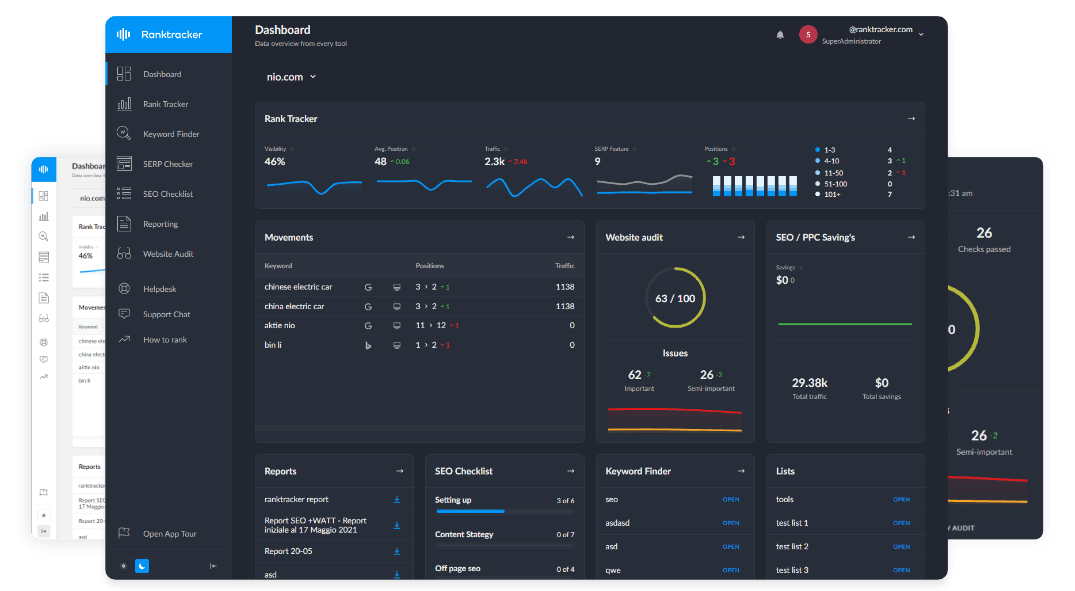Intro
Clienteling is the practice of building long-term customer relationships through personalized interactions. In retail, it has evolved from in-store service to a strategy that spans websites, apps, and omnichannel experiences.
Modern clienteling supports SEO by improving engagement, strengthening brand signals, and encouraging loyalty. Retailers that combine data-driven insights with narrative-driven formats, such as in-app stories and interactive content, create measurable advantages in both visibility and sales.
What is Clienteling in Retail
Clienteling refers to the process of maintaining close, personalized relationships with customers beyond a single purchase. Traditionally, this meant sales associates remembering a shopper’s preferences and offering tailored advice during store visits. In the digital age, it now includes communication across mobile apps, emails, loyalty programs, and social platforms.
Core elements of clienteling include:
-
Personalization: tailoring recommendations to individual needs
-
Consistency: ensuring the same quality of interaction across channels
-
Relevance: offering content and offers at the right time
-
Memory: storing preferences, history, and behaviors for future use
While the concept is not new, digital tools have expanded its scope, making clienteling both scalable and measurable.
Why Clienteling Matters for Retail SEO
Search engine optimization in retail is often viewed as a way to attract new traffic. Yet visibility is only part of the process. If users arrive but do not stay, rankings lose their value. Clienteling addresses this issue by creating engagement loops that keep customers connected.
Google’s algorithms measure signals such as:
-
Dwell time: how long a visitor spends on a page or in an app
-
Click depth: whether users explore more than one section
-
Return visits: the likelihood of repeat sessions
-
Brand searches: queries for specific retailers or services
When clienteling strategies succeed, these metrics improve. In practice, storytelling, personalized journeys, and targeted recommendations make customers more likely to remain engaged. Over time, this increases both SEO performance and conversion potential.
The Digital Transformation of Clienteling
Clienteling is no longer confined to human memory. Retailers use analytics, CRM systems, and AI-driven tools to track and predict customer behavior. The shift has turned a personal art into a measurable science.
Modern clienteling strategies involve:
-
Data integration: combining purchase history with online behavior
-
Omnichannel communication: uniting store, web, and app experiences
-
Interactive content: using quizzes, polls, and stories to learn more about preferences
-
Lifecycle marketing: guiding customers from discovery to repeat purchase with tailored messages
Real-world examples of transformation
-
Luxury fashion: Brands like Burberry use mobile apps that let associates see a client’s purchase history across stores. This allows seamless recommendations, even if the customer visits a new location.
-
Mass retail: Sephora connects online browsing with in-store experiences. A shopper who explores skincare online receives tailored suggestions in the store, supported by staff who access the same digital record.
-
Grocery: Walmart and Carrefour integrate loyalty programs with digital shopping lists and personalized promotions. Customers feel recognized, while retailers collect data that improves targeting.
These examples illustrate that clienteling is not only for luxury markets. It has become a scalable practice that enhances customer satisfaction and supports SEO through higher engagement.
Clienteling and In-App Engagement
Mobile applications have become central to modern clienteling. They allow retailers to interact with customers directly, without the noise of external platforms. This is where storytelling and interactivity make a difference.
For example, InAppStory provides retailers with tools to create in-app stories, product tips, and mini-games. These formats do more than entertain. They collect valuable behavioral data, keep users active longer, and build emotional connection.
The All-in-One Platform for Effective SEO
Behind every successful business is a strong SEO campaign. But with countless optimization tools and techniques out there to choose from, it can be hard to know where to start. Well, fear no more, cause I've got just the thing to help. Presenting the Ranktracker all-in-one platform for effective SEO
We have finally opened registration to Ranktracker absolutely free!
Create a free accountOr Sign in using your credentials
From an SEO perspective, such engagement has an indirect impact. When campaigns attract traffic from search into the app, clienteling techniques ensure that users stay active and return more often, which reinforces the signals Google values when assessing brand authority.
Use cases across industries
-
Banking: Onboarding new customers with interactive stories helps explain complex financial products. Instead of abandoning the app after a single session, users engage with step-by-step narratives.
source: https://inappstory.com/blog/gamification-apps
-
Fashion: Personalized lookbooks inside the app show outfits tailored to purchase history. Shoppers interact with content longer, and the retailer benefits from increased session depth.
source: https://inappstory.com/blog/retail-media
-
Grocery: Seasonal recipes and quizzes drive customers to explore products they might not otherwise consider. The app becomes more than a transaction tool, it turns into a daily resource.
source: https://inappstory.com/case-studies/metro-case-study
These examples highlight how clienteling, when combined with in-app engagement, strengthens both loyalty and visibility.
Benefits of Clienteling for Retailers
Clienteling delivers measurable advantages when applied consistently.
For the customer
-
Personalized recommendations
-
Faster access to relevant products
-
A feeling of being valued and understood
For the retailer
-
Higher lifetime value per customer
-
Lower churn rates
-
Increased likelihood of word-of-mouth referrals
-
Stronger brand loyalty and search visibility
The dual benefit strengthens both short-term sales and long-term brand equity.
Challenges in Modern Clienteling
Despite its advantages, clienteling requires careful execution.
Compliance and privacy
Retailers must handle personal data responsibly. Regulations such as GDPR in Europe and CCPA in California require transparency and customer consent. Missteps can damage both trust and brand reputation.
Cultural differences
Clienteling practices that work in one market may fail in another. For example, highly personalized outreach is appreciated in luxury fashion in Europe but may be perceived as intrusive in some Asian markets. Retailers need to adapt tone, frequency, and methods according to cultural expectations.
Technical integration
Bringing together data from in-store systems, e-commerce platforms, and mobile apps is complex. Inconsistent databases create fragmented experiences that frustrate customers. Successful clienteling requires unified infrastructure and investment in integration.
By acknowledging these challenges, retailers can avoid pitfalls and design programs that build trust rather than erode it.
Future Trends in Clienteling
Clienteling continues to evolve as customer expectations shift and technology advances. What was once a luxury-store practice has become a mainstream necessity. Looking ahead, several trends are likely to define the next decade of retail clienteling.
Hyper-personalization at scale
Retailers are moving beyond simple segmentation to micro-level personalization. Instead of broad customer groups, offers are tailored in real time to an individual’s behavior, context, and even location.
For example, a fashion app may recommend an outfit not just based on past purchases but also on the weather in a customer’s city that day. Hyper-personalization requires advanced analytics and unified customer data platforms, but it delivers unmatched relevance.
Interactive storytelling as a loyalty driver
Static product descriptions are giving way to dynamic, story-based content. Interactive storytelling formats such as swipeable stories, quizzes, or gamified product launches create deeper emotional connections.
A grocery retailer may publish weekly recipe stories that highlight seasonal products, while a sports brand may design interactive challenges that showcase new collections. These experiences feel less transactional and more engaging, which supports long-term loyalty.
Sustainability-driven loyalty programs
Customers increasingly expect brands to reflect their values. Sustainability is at the top of this list. Clienteling is beginning to include initiatives that reward conscious shopping behavior.
For instance, a retailer could offer loyalty points for eco-friendly product choices or for participating in recycling programs. This not only deepens engagement but also strengthens the retailer’s brand reputation in search results, as sustainability-related queries continue to rise.
Seamless omnichannel integration
True clienteling in the future will erase the distinction between online and offline. Customers may browse online, receive a personalized push notification, and complete the purchase in a store where an associate already knows their preferences. Technology that integrates CRM, mobile apps, and in-store systems will make this possible. The smoother the journey, the more likely customers are to return, and their repeat searches for the brand reinforce authority in Google’s rankings.
AI-supported sales associates
Artificial intelligence will play a growing role in equipping store staff with insights. Associates can use handheld devices or apps to see real-time recommendations based on a customer’s browsing and purchase history. This allows for the same level of personalization in physical stores as in digital environments. Importantly, AI here acts as an assistant rather than a replacement, supporting the human relationship that lies at the heart of clienteling.
Predictive engagement across the lifecycle
Clienteling will not stop at personalization during the purchase. Predictive models will anticipate needs throughout the customer lifecycle. A retailer may recognize when a product is likely to run out and send a timely reminder. Or an app may predict when a customer is about to churn and offer targeted incentives. This proactive approach turns clienteling into an ongoing service rather than an occasional interaction.
Global adaptability with local sensitivity
As retailers expand across borders, clienteling will need to account for cultural differences. Personalization styles that succeed in Europe may feel intrusive in Asia, while loyalty expectations in North America may not resonate in the Middle East. Future clienteling strategies will combine global platforms with flexible local adaptations, ensuring that experiences remain relevant without losing brand consistency.
Conclusion
Clienteling has moved far beyond the image of a boutique sales associate remembering a loyal shopper’s favorite items. In today’s retail landscape, it is a comprehensive strategy that blends data, technology, and human interaction. Its influence extends from in-store conversations to mobile app experiences, and from personalized recommendations to search engine signals.
For SEO professionals, the lesson is clear. Visibility alone is not enough. Search engines increasingly reward content and experiences that hold attention, encourage return visits, and inspire brand loyalty. Clienteling strengthens all of these signals by making every interaction feel relevant and personal.
Retailers that adopt modern clienteling practices from hyper-personalized recommendations to interactive storytelling gain more than satisfied customers. They secure stronger engagement metrics, richer data for decision-making, and a competitive edge in search rankings. As retail continues to evolve, clienteling will remain not only a customer relationship tool but also a critical driver of digital success.

